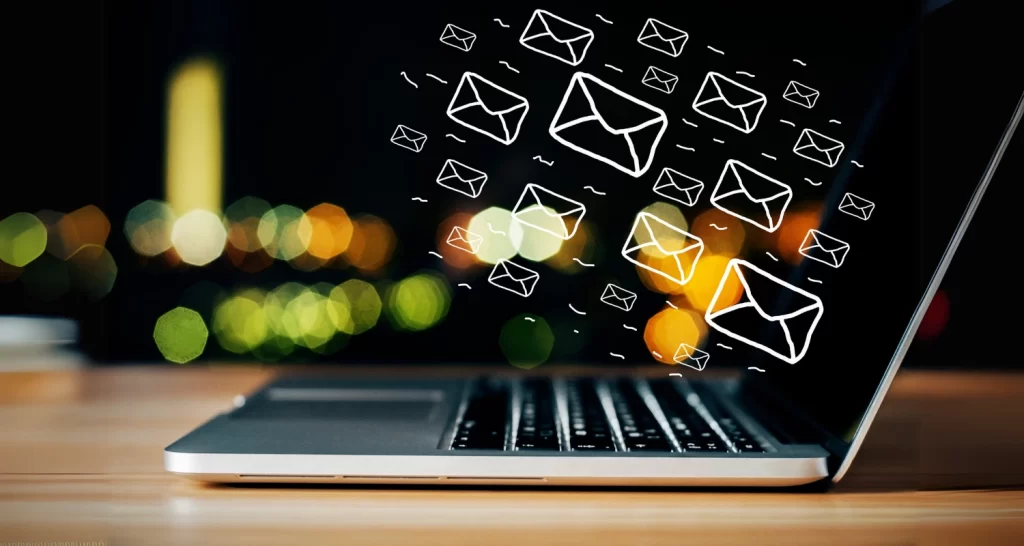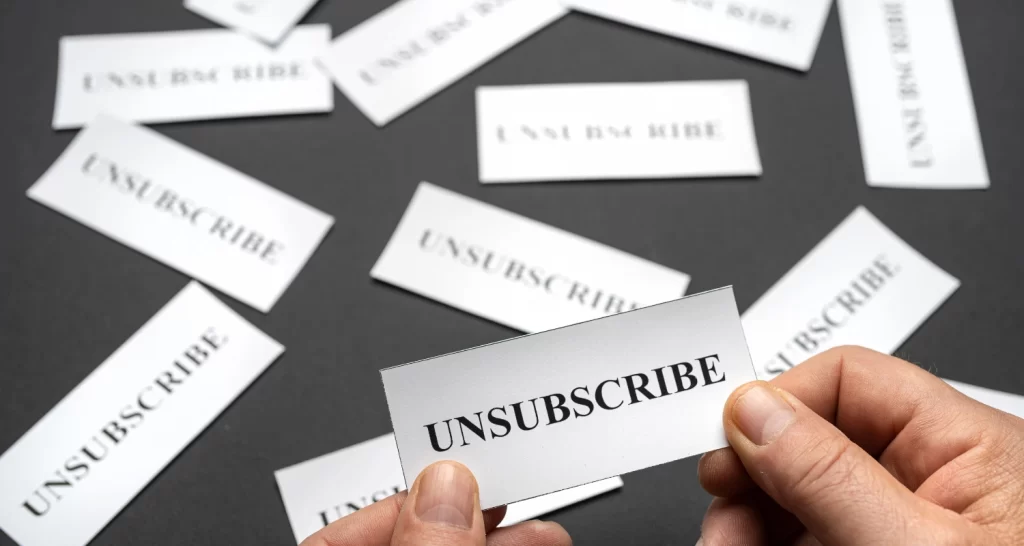
Why Email Marketing is the Key to Customer Retention in E-commerce
In the world of e-commerce, customer retention is just as important as acquiring new customers. A solid strategy for retaining customers involves building long-term relationships, and email marketing is one of the most effective ways to achieve this.

It allows businesses to stay connected with their customers, keep them engaged, and encourage repeat purchases. This article will explore the role of email marketing in retaining e-commerce customers and provide actionable strategies to harness its full potential.
Ways To Use Email marketing for Customer Retention

10 ways how email marketing can help in retaining e-commerce customers –
1. Personalized Email Campaigns
Personalization is key to building strong customer relationships and improving customer retention strategies through email marketing.
- Customized Product Recommendations
Send personalized emails based on past purchases or browsing behavior. Tailored recommendations make the customer feel understood and valued, encouraging them to return to your store for future purchases. For example, Spotify sends personalized email recommendations based on a user’s listening history. For instance, if someone frequently listens to indie music, they might receive an email suggesting new indie artists or curated playlists, encouraging them to explore more and stay engaged. - Birthday or Anniversary Emails
Sending special offers or greetings on customers’ birthdays or the anniversary of their first purchase helps nurture a personal connection. This thoughtful approach can make customers feel appreciated, increasing brand loyalty. - Personalized Discounts
Offer personalized discounts based on a customer’s spending habits or loyalty level. Customers are more likely to engage with promotions that feel specifically targeted to their preferences and purchase history.
By creating tailored email campaigns, you can strengthen customer relationships and increase the likelihood of repeat purchases.
2. Segmentation for Relevant Communication

Segmenting your email list allows you to send more targeted, relevant content to each customer group, making your emails more effective and leading to data-driven e-commerce decisions that enhance engagement.
- Demographic Segmentation
Segment your list by demographics such as age, gender, or location to tailor email content. For example, sending location-based deals or region-specific product recommendations increases the chances of conversion and customer retention. - Behavioral Segmentation
Segment customers based on their behavior, such as whether they are frequent buyers, cart abandoners, or first-time visitors. Behavioral segmentation allows for more timely and relevant communication, increasing engagement and retention rates. - Life Cycle Stage Segmentation
Categorize customers by their lifecycle stage, from new subscribers to loyal advocates. This segmentation enables you to send emails that are relevant to each stage, such as welcome emails, re-engagement campaigns, or loyalty rewards.
Example: Nike uses segmentation to send location-based offers, product recommendations based on behavior, and loyalty rewards for frequent buyers. This ensures relevant, timely content that boosts engagement and retention.
3. Cart Abandonment Recovery
Cart abandonment is a common challenge for e-commerce businesses. Email marketing can be used to recover potentially lost sales and re-engage customers who have abandoned their shopping carts, helping to optimize your website for conversions.
- Reminder Emails
Send a reminder email within hours of a customer abandoning their cart. Highlight the items they left behind and offer a clear path back to complete the purchase. A simple nudge can recover a significant number of abandoned carts. - Incentives for Completion
Provide incentives such as discounts or free shipping in follow-up emails to encourage customers to complete their purchase. Offering a limited-time discount can create a sense of urgency, driving conversions. - Exit-Intent Emails
Implement exit-intent popups on your website that trigger a cart abandonment email when a customer attempts to leave without purchasing. Timing is crucial in catching customers before they leave your site for good.
Example: ASOS sends reminder emails within hours of cart abandonment, often including incentives like discounts or free shipping to encourage completion. They also use exit-intent popups, prompting a cart abandonment email when a customer tries to leave without purchasing.
4. Loyalty Programs and Reward Emails

Loyalty programs incentivize repeat purchases, and email marketing plays a significant role in promoting and nurturing these programs, forming part of a scalable business model that supports long-term growth.
- Exclusive Loyalty Rewards
Send targeted emails to customers who have joined your loyalty program, informing them of exclusive rewards, discounts, or early access to sales. This keeps customers engaged and motivated to make repeat purchases. - Progress Emails
Track and communicate a customer’s progress within the loyalty program, such as points accumulated or tier levels achieved. Seeing progress encourages customers to continue purchasing to reach the next milestone. - Anniversary Emails
Celebrate the anniversary of a customer joining your loyalty program by sending them a special reward or discount. This creates a personal connection and shows appreciation for their ongoing loyalty.
Example: Starbucks sends targeted emails to loyalty program members, offering exclusive rewards, progress updates on stars earned, and special anniversary discounts. These emails keep customers engaged, encouraging repeat purchases and increasing lifetime value.
5. Post-Purchase Engagement
The time following a purchase is critical for maintaining engagement and turning one-time buyers into repeat customers, ensuring e-commerce business growth through strategic follow-ups.
- Thank You Emails
Send personalized thank you emails after a purchase, expressing appreciation for their business. A simple thank-you message can leave a positive impression and make customers feel valued, enhancing brand loyalty. - Follow-Up for Reviews
Encourage customers to leave reviews or feedback on the products they purchased. Customer reviews not only provide valuable insights but also foster a sense of community and trust in your brand. - Product Recommendations
Send follow-up emails with product recommendations based on previous purchases. This encourages cross-selling and up-selling, and ensures your customers stay engaged with your brand, even after they’ve completed a transaction.
For example: Apple sends personalized thank-you emails after purchases, encourages product reviews, and suggests complementary products based on previous purchases to engage customers post-purchase.
6. Educational Content and Tips

Sending valuable educational content through email marketing helps to build trust and credibility with your customers, ensuring sustained engagement and supporting digital marketing for Shopify stores.
- How-To Guides
Send emails that provide useful how-to guides or tutorials for using your products. This adds value beyond the purchase and shows customers how they can make the most of their purchases, increasing satisfaction and retention. - Product Care Tips
Offer product care and maintenance tips to enhance the longevity of items purchased. Providing this type of value encourages customers to revisit your site for future needs and builds a long-term relationship. - Newsletters
Regularly send newsletters with updates, product launches, or industry news. Keeping your customers informed helps maintain top-of-mind awareness, encouraging them to return and engage with your brand.
Educational emails contribute to customer retention by providing value and building a deeper connection with your audience.
7. Re-Engagement Campaigns
Over time, some customers may lose interest or become inactive. Re-engagement email campaigns can help win back lapsed customers and bring them back to your store, reinforcing customer retention strategies.
- Win-Back Offers
Send special offers or discounts to customers who haven’t made a purchase in a while. A compelling offer can reignite interest and prompt them to return to your store. - Survey Emails
Send emails asking customers why they haven’t returned and what can be improved. This shows customers you care about their opinion and can help you refine your email marketing efforts. - Product Updates
Send updates about new product launches or improvements to existing products. Highlighting what’s new or improved can re-engage lapsed customers and spark a renewed interest in your store.
Re-engagement campaigns are essential for maintaining a strong, loyal customer base, even after a period of inactivity.
8. Seasonal and Promotional Emails

Leverage seasonal events or sales promotions to keep customers engaged and coming back to your Shopify store, using social media marketing and email marketing for maximum reach
- Seasonal Promotions
Send targeted emails for seasonal sales or holiday promotions. Creating a sense of urgency with limited-time offers can drive customers to act quickly and make a purchase. - Flash Sales
Offer exclusive flash sales through email, creating excitement and incentivizing customers to make a purchase before the sale ends. - Event-Based Emails
Use events like Black Friday, Cyber Monday, or New Year’s to send tailored promotional emails. These high-traffic times are opportunities to engage with customers and offer them attractive deals.
Seasonal and promotional emails keep customers excited about returning to your store, driving consistent sales year-round.
9. User-Generated Content and Social Proof
User-generated content (UGC) such as customer reviews, ratings, and photos can be powerful tools in email marketing, helping to build trust and increase engagement, while also supporting search engine optimization through authentic content.
- Customer Reviews in Emails
Incorporate positive customer reviews into your email campaigns. Social proof is persuasive, and showing potential buyers that others have had a positive experience can increase trust and conversion rates. - Photo Sharing
Encourage customers to share photos of their purchases on social media and feature them in your emails. User-generated photos create authenticity and resonate with customers more than traditional marketing. - Testimonial Emails
Feature customer testimonials in your emails, focusing on real experiences that resonate with your target audience. Testimonials provide credibility and can drive customers back to your store.
Leveraging UGC in email campaigns helps build social proof, reinforcing the value of your products and encouraging repeat purchases.
10. Clear Unsubscribe Process

While it may seem unexpected, allowing customers to easily unsubscribe from your emails can actually help retain them in the long run by ensuring a transparent marketing strategy that prioritizes customer preferences.
- Respect Customer Preferences
Allow customers to choose what types of emails they want to receive rather than forcing them to unsubscribe entirely. By respecting their preferences, you maintain a positive relationship and avoid losing them entirely. - Survey Before Unsubscribing
When a customer chooses to unsubscribe, offer them a short survey to understand their reasons. This feedback can help you improve future campaigns and prevent other customers from unsubscribing. - Re-Subscription Option
Give customers an option to re-subscribe at any time. This creates an open line of communication and increases the chances of re-engaging customers down the line.
A clear and respectful unsubscribe process ensures customers have control over their email preferences, leading to better long-term retention.
Conclusion
At Cybez, we go beyond just sending emails—we create impactful retention marketing strategies that keep your customers engaged and coming back. Whether it’s through personalized email campaigns, loyalty programs, or smart re-engagement tactics, we help e-commerce brands maximize customer lifetime value.
To know more, get in touch with us today!

